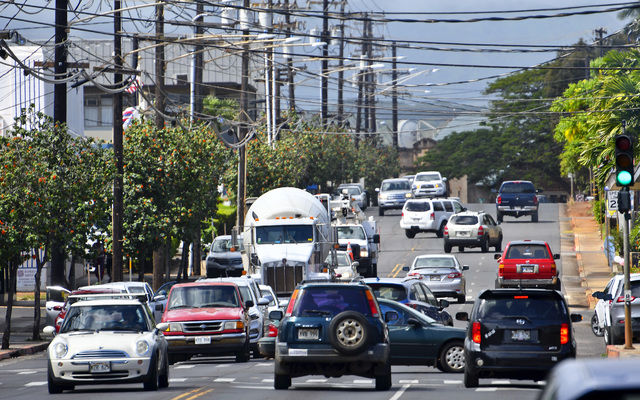LIHUE — Mel Rapozo, council chair, was the only councilmember opposed to making changes to the TIGER Grant projects. “We have some issues on this island that are safety-related. That is congestion, not just on Kuhio, but also on Kaumualii
LIHUE — Mel Rapozo, council chair, was the only councilmember opposed to making changes to the TIGER Grant projects.
“We have some issues on this island that are safety-related. That is congestion, not just on Kuhio, but also on Kaumualii (highways),” he said. “Supporting this just simply because it’s federal money isn’t the right way of looking at it.”
On Wednesday, the Kauai County Council voted 6 to 1 to pass Resolution No. 2016-57, which proposed making changes to projects funded by a $13.8 million Transportation Investment Generating Economic Recovery, or TIGER Grant.
Rapozo also voiced concerns about the county agreeing to put up $2 million for the project.
“We don’t know what the final cost will be. I can tell you it isn’t going to be $2 million,” he said. “It’s going to be more than that. We’re going to have to cut back a lot on this project, and it’s not going to be what we’re looking at today.”
If the project ends up costing more than expected, it will be up to the county to make up the difference, Rapozo added.
But Lyle Tabata, acting county engineer, and Keith Suga the CIP program manager aren’t worried about keeping to the budget.
“Our drawings will stay within budget, and we will closely monitor it,” Suga said.
Changes to the TIGER Grant include condensing the four-lane traffic into three lanes and limiting parking between Haleko Road and Hardy Street to two hours.
Other changes are:
- Adding center two-way left turn lanes on Rice and Hoolako streets
- Establishing left-turn-only lanes on Rice and Hoolako streets
- Establishing marked pedestrian crosswalks across Rice, Puaole, Kalena, Hoala and Malama and Hoolako streets
- Creating bicycle lanes on Rice and Hoolako streets
- Adding bus stops on Rice Street
During Wednesday’s meeting, Councilman Ross Kagawa said he’s weighing the pros and cons of the project.
“Pros (are) that it will slow down traffic, allow for better visibility and be safer for walkers, bikers and drivers. Aesthetically, it will be more beautiful and be more inviting for businesses. There will be a lot more on-street parking,” he said. “The big one for me is that we will recognize $13.8 million in federal monies that will stimulate our economy, especially the construction workers.”
The major con is traffic congestion, Kagawa said.
“In areas of high traffic, we’re going from four lanes down to three lanes. I don’t know how that will improve traffic flow,” he said.
Getting the $13.8 million grant was an accomplishment, and it’s hard to deny that kind of money, Kagawa added.
Moving forward, Councilman Gary Hooser said he’d like to see the administration focus on addressing traffic congestion in Kapaa.
“We all know grants come from different buckets of money. I suspect there are grants available through FEMA and other areas to look at the situation in Kapaa, which I believe is a disaster waiting to happen, if we were to have a tsunami or another disaster. There’d be no place to go, and people can’t get to higher ground,” Hooser said.
The administration has until June 30, 2017, to present a final concept to the council for a final vote. If all goes to plan, construction is slated to begin by end of 2018.
The project will take about a year to complete.


